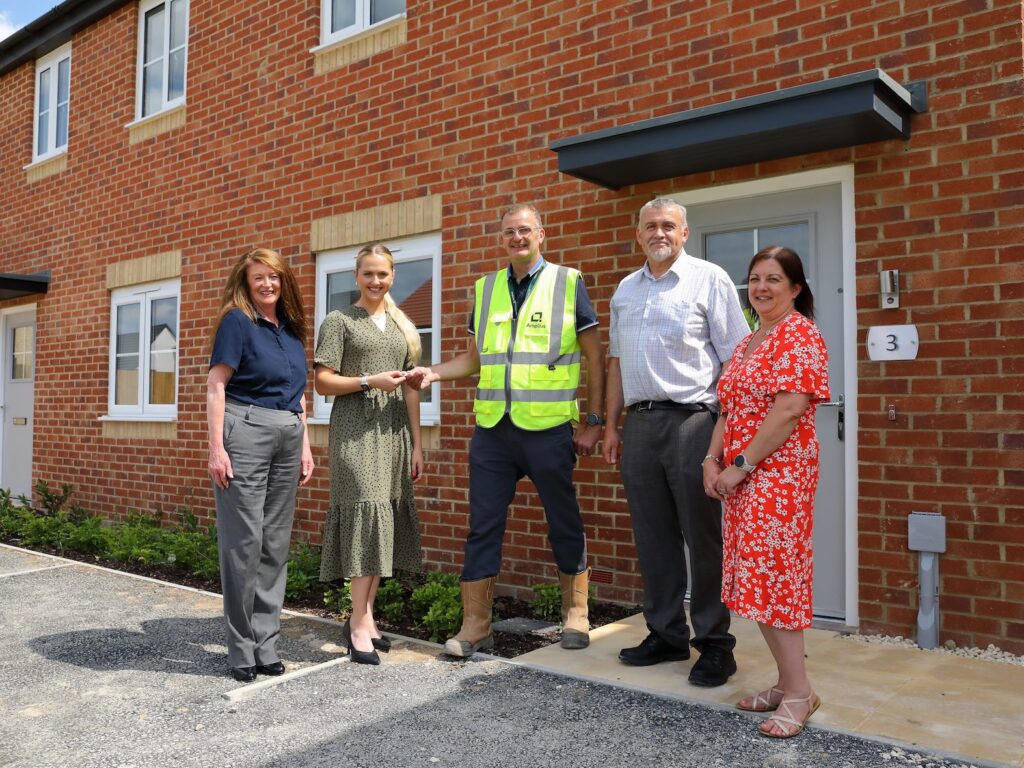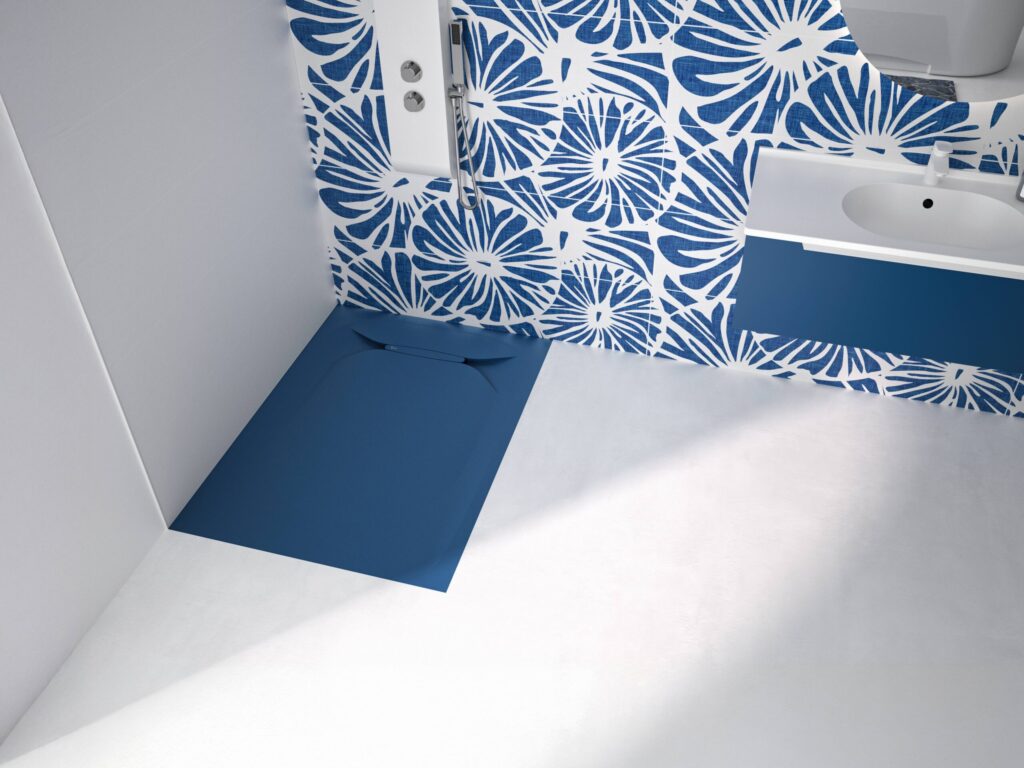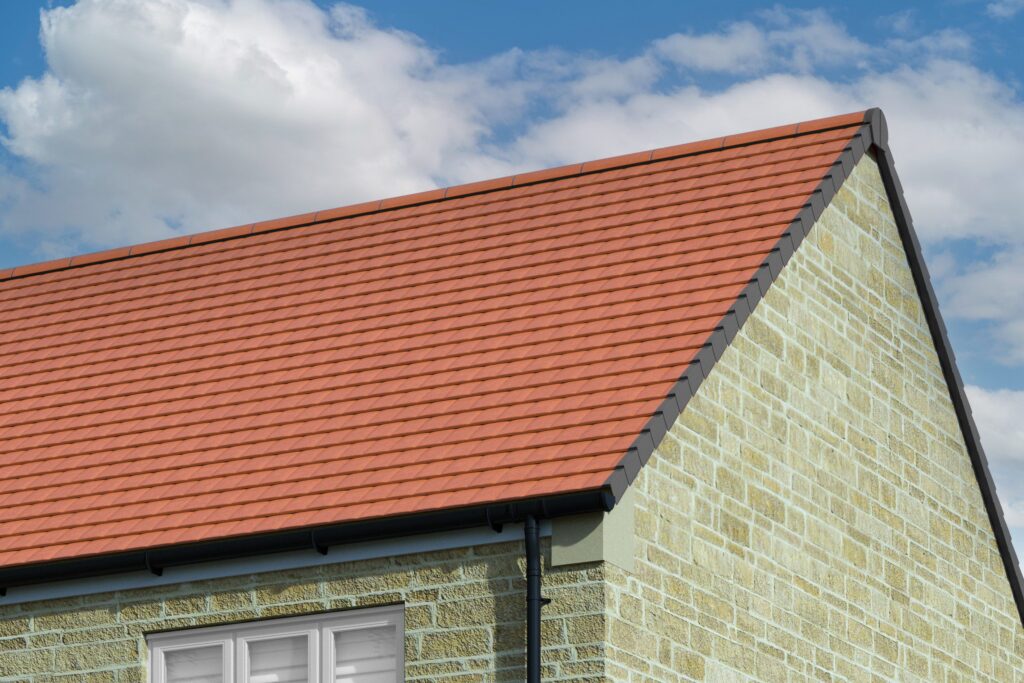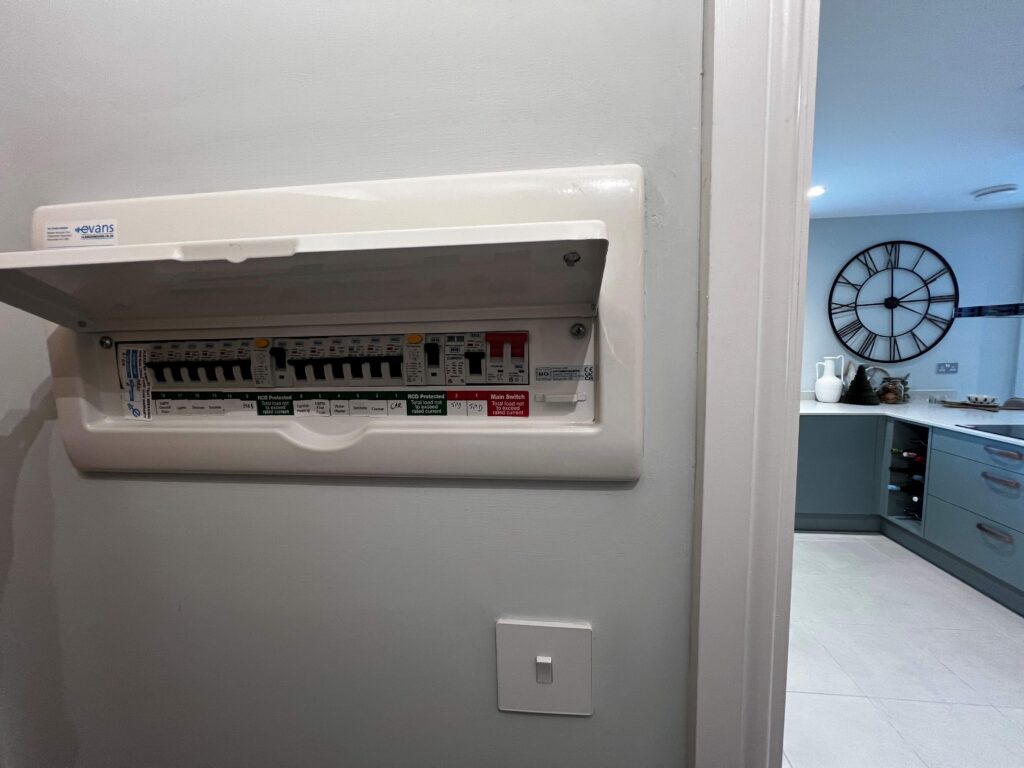Showhome Editor Joseph Clarke recently spoke with Emma Bohan, Managing Director of IMS Heat Pumps to debunk some of the common myths and misconceptions around heat pumps
In the realm of energy-efficient heating solutions, heat pumps have emerged as a longstanding contender. However, it’s not merely their longevity that speaks volumes, but rather the concerted efforts of governmental support and legislative initiatives that have propelled heat pumps into the spotlight as a standard technology.
Emma Bohan, Managing Director of IMS Heat Pumps, recently shed light on this transformative journey. In her session at Showhome Live, which ran 17-18 April, she explained that “the view that the government and various drivers and legislation have all been gearing towards heat pumps as a standard technology started many years ago.” Indeed, milestones like the Renewable Heat Incentive of 2011 have laid the groundwork, accompanied by a myriad of strategy documents and legislative frameworks that have steadily advanced the adoption of heat pump technology.
The momentum continues to build, with recent shifts in the heat and building strategy notably impacting both domestic and non-domestic sectors. “We saw the heat and building strategy changes to Part L and Part F in domestic and non-domestic buildings in 2021,” Emma noted. Furthermore, ongoing consultations, such as the future home standard consultation, and the introduction of innovative technologies like HEMS (Home Energy Management Systems) in Scotland, underscore the trajectory towards mainstream acceptance of heat pumps.
This strategic positioning prompts a deeper exploration of the technology itself, highlighting the distinct differences between various types of heat pumps.
Heat Pump Variants
Ground source heat pumps are particularly suited for larger properties, leveraging available land for optimal performance. “They are best for new build properties where the installation can be planned in right from the start,” Emma observed.
Conversely, air source heat pumps offer a more versatile solution, ideal for properties with limited ground space. Emma elaborated, “They are cheaper and less disruptive to install because of the lack of groundwork.” This distinction sets the stage for informed decision-making when selecting the most suitable heat pump for a specific property.
Noise
One of the most common myths associated with heat pumps is that they are noisy. Emma Bohan explained that most of the major manufacturers out there have realised that noise is a concern and have therefore all been working hard to bring that down. Thanks to their efforts, a lot of the heat pumps on the market have now got what is known as a quiet mark for the quietness of the product. Generally, they are mainly in the range of 40 to 60 decibels and as long as they adhere to the MCS 020 permitted development rules in terms of the sound output at the nearest listening point, they pass planning, provided they meet all other requirements.
I asked Emma why she thought that this misconception around heat pumps being noisy is still commonly shared. She suggested that the misconception regarding noisy heat pumps persists due to the prevalence of loud commercial air conditioning units typically situated outdoors. She remarked, “It’s interesting to note that BSRIA have recently done a study into the noise of heat pumps…” This study has prompted a reconsideration of regulations, as Emma pointed out, “the permitted development is currently out for consultation on reducing some of the boundary requirements because the realisation is that whilst noise is a major concern about heat pumps, the actual level of complaints about noise from heat pumps is minuscule.” She referred to it as “the noise about noise” phenomenon.
Emma went on to highlight the efforts made by domestic heat pump manufacturers to mitigate noise issues, stating, “domestic heat pump manufacturers have taken those issues on board or the perceived issues of noise and all of them have worked really, really hard to bring the noise of the outdoor unit down as much as they can.” She concluded by noting the ongoing quest for quieter technology, saying, “I always like to point out that not even Dyson has managed to invent the soundless fan yet, unfortunately it does have to spin.”
Cold weather
In colder climates, there is a common misconception that heat pumps will not function effectively. However, Emma challenged this notion, pointing out that major manufacturers rigorously test their heat pumps in cold weather conditions. She emphasised the success of heat pump installations in some of Europe’s coldest countries like Sweden, Denmark, Norway, and Estonia. She also provided real-life examples from Scotland, where heat pumps have performed admirably even in subzero temperatures. Despite Scotland’s reputation for cold weather, heat pump installations have proven their effectiveness in the region.
Costs
While it’s undeniable that electricity currently comes at a higher cost compared to gas, with rates hovering around 3.6 to 3.7, there are innovative electricity tariffs emerging that offer alternatives. However, a well-designed and properly installed heat pump can significantly reduce your overall energy expenses, even when compared to a gas bill. This highlights the importance of engaging with a reputable installer early in the process to ensure efficient design and installation tailored to the end user’s needs.
According to Emma, a well-insulated property reduces the workload and size requirements of the heat pump, consequently lowering upfront costs. Similarly, properly sizing hot water systems and considering the scale of the property can lead to cost savings. Additionally, simplifying the system design and avoiding overly complex setups can help reduce labour costs associated with installation. Ultimately, Emma suggests that with careful planning and consideration, heat pump installations can be both effective and cost-efficient, even in colder climates.
Many people also express concern about the perceived high running costs of heat pumps, often citing the belief that they are constantly consuming electricity. However, Emma made a valid comparison between heat pumps and refrigerators, explaining that both are “always on” but only activate when necessary to maintain the desired temperature. She addressed common queries about power outages by highlighting that traditional gas boilers also require electricity to function. Emma acknowledges that electricity prices are currently higher than gas prices, underscoring the importance of heat pump efficiency.
To illustrate the cost-effectiveness of heat pumps, Emma presented a comparison of energy costs for heating and hot water in a C-rated property. In doing so, she demonstrated how the efficiency of a heat pump, measured by its Seasonal Coefficient of Performance (SCOP), influences running costs. For example, a basic heat pump with a low SCOP may result in electricity costs similar to or slightly higher than those of gas heating. However, as the SCOP improves, the heat pump becomes increasingly cost-effective compared to traditional oil and LPG heating systems.
Emma discussed initiatives like the “closing the spark gap,” where providers offer discounted electricity rates for heat pump users, further enhancing their economic viability. She emphasised that while basic SCOP levels may only break even with gas heating costs, real-life examples demonstrate the potential for higher SCOP values to significantly reduce energy expenses. Homeowners should be encouraged to explore heat pump options with higher SCOP ratings, pointing to data from monitoring systems like Heat Monitor to showcase their performance in various settings.
Clients who have invested in quality heat pump systems report substantial savings on their gas bills. According to Emma, Data from sources like Heat Pump Monitor and Open Energy Monitor demonstrate numerous heat pump installations across the country outperforming standard efficiency levels (SEOP). Any SEOP rating exceeding 3.6 to 3.8 typically translates to tangible cost savings. Additionally, for communities without existing gas infrastructure, installing heat pumps can provide significant long-term savings by avoiding the costs associated with gas mains.
Size and Efficiency
When installing a heat pump, it’s crucial to conduct a thorough energy assessment to determine the appropriate size and efficiency of the system. This assessment considers factors such as the property’s total heat loss on a room-by-room basis, ventilation requirements, the thermal properties of building materials, and the occupants’ lifestyle preferences. Engaging with professionals early in the planning process allows for more efficient system design, including considerations for heating zones, optimal pipe runs, floor heights, and underfloor heating configurations.
The layout and placement of the heat pump system components also play a significant role in its efficiency. For example, selecting an appropriate location for the heat pump unit and hot water cylinder is essential. Depending on the property’s size and heating requirements, options range from dedicated rooms to compact installations in utility spaces. Additionally, for ground source heat pumps, planning for trenching or drilling requirements is necessary, with a general guideline of allocating two to three times the property’s heated floor area in available land.
Hot water design follows industry standards, such as the BS 8558 minimum requirement, which ensures adequate water supply based on occupancy and usage patterns. Careful consideration is given to heating distribution methods, including underfloor heating layouts, radiator placements, and pipe spacing. Furthermore, the selection and placement of control systems are integral to optimising the system’s performance and user experience.
By prioritising early engagement with professionals and meticulous planning of system design and component placement, Emma advised, homeowners can ensure the efficiency and effectiveness of their heat pump installations.
Maintenance
Ensuring the smooth operation of your heat pump typically requires minimal intervention once it’s installed and running. However, it’s essential to adhere to warranty requirements, which often mandate an annual service for the heat pump. While homeowners can perform basic maintenance tasks to ensure efficiency, such as keeping the area around the outdoor unit clear, having a professional engineer conduct a thorough inspection ensures optimal performance.
Additionally, it’s important to note that alongside the heat pump service, the unvented cylinder also requires attention. G3 regulations stipulate that it should undergo an annual inspection. Therefore, it’s advisable to schedule a comprehensive service that covers both the heat pump and the accompanying cylinder to ensure compliance and efficient operation.
Final remarks
In recent times, legislative changes have underscored the imperative of prioritising energy efficiency in the construction of new homes. With regulations like Part L dictating that systems must be designed to operate at lower temperatures, the role of heat pumps in modern construction has become increasingly pivotal. Adhering to these regulations, or even surpassing them by designing properties for a 35-degree flow, presents homeowners with the opportunity to significantly enhance the efficiency of their heat pump systems. This not only translates to reduced running costs but also ensures that occupants enjoy a living environment tailored to their specific needs and preferences, fostering comfort and satisfaction.
Furthermore, a thorough understanding of the intended use of the property and the lifestyle preferences of its future occupants is essential in achieving a well-balanced and effective design. By taking into account factors such as heating requirements, occupancy patterns and user control preferences, homeowners can create residences that not only provide warmth and comfort but also represent a prudent investment choice.
Emma Bohan examined the potential value added by heat pump installations, pointing out that recent studies have revealed promising insights – ground and air source heat pumps have been shown to potentially increase property values by up to 3%. Additionally, properties with high energy efficiency ratings, such as those with EPC ratings of A or B, have witnessed significant boosts in value, sometimes reaching as high as £57,000.
Given the burgeoning demand for energy-efficient and environmentally conscious housing solutions, integrating heat pumps into new construction projects has emerged as a strategic imperative. Whether embarking on small-scale developments or ambitious large-scale ventures, incorporating heat pumps offers a multitude of benefits. However, to fully capitalise on the advantages afforded by heat pump technology, early collaboration with seasoned installers is paramount. By aligning with reputable professionals who possess the requisite expertise and experience, homeowners can ensure optimal returns on their investments and realise the full potential of heat pump systems in modern construction.
Read more news and exclusive features in our latest issue here.
Never miss a story… Follow us on:
Showhome
@Your_Show_Home
@Showhomemag
Media Contact
Joseph Clarke
Editor, Showhome
Tel: +44 (0) 1622 823 920
Email: [email protected]











